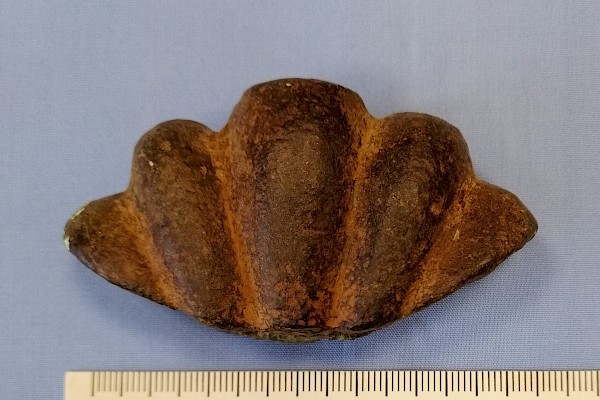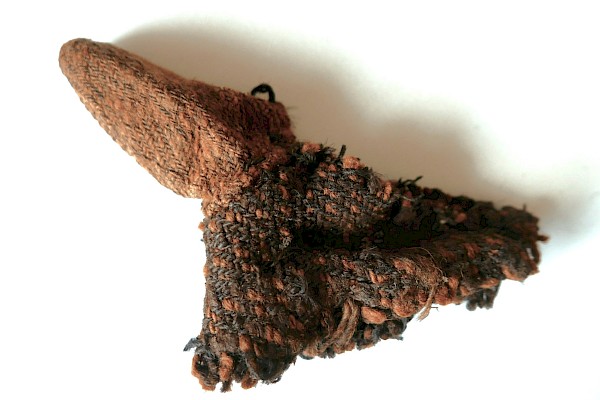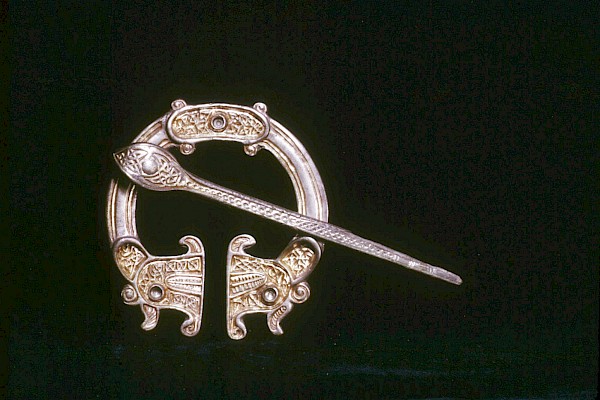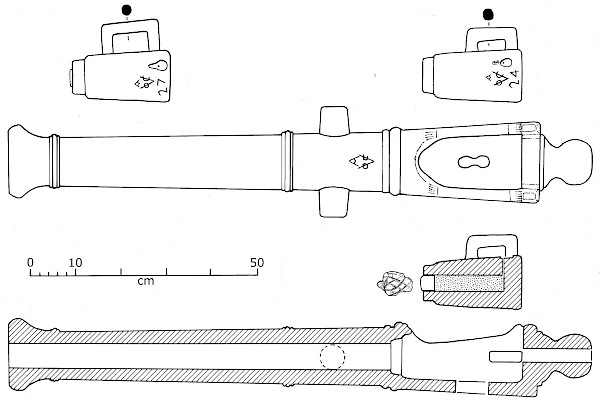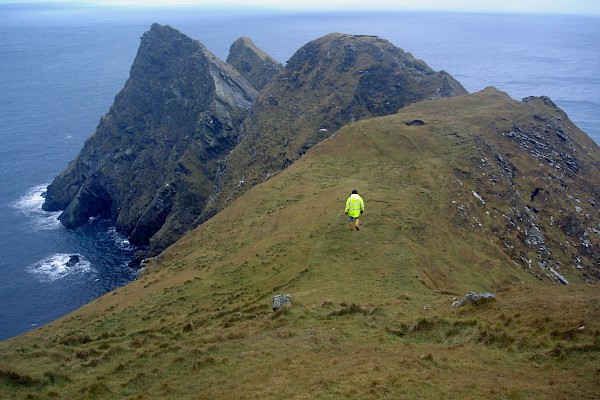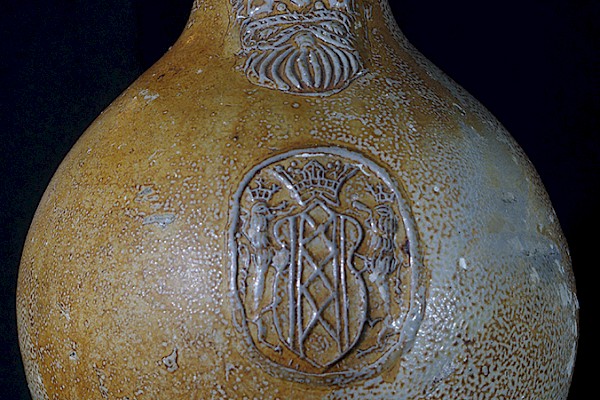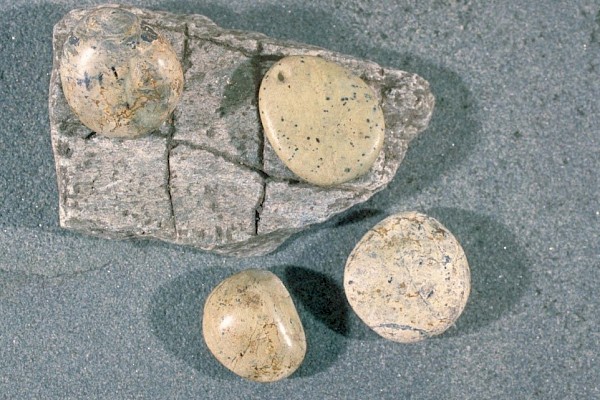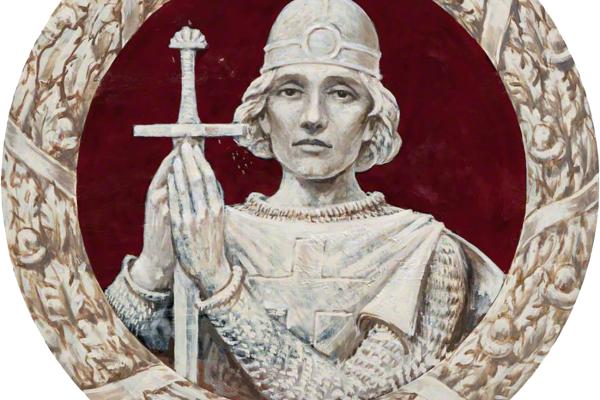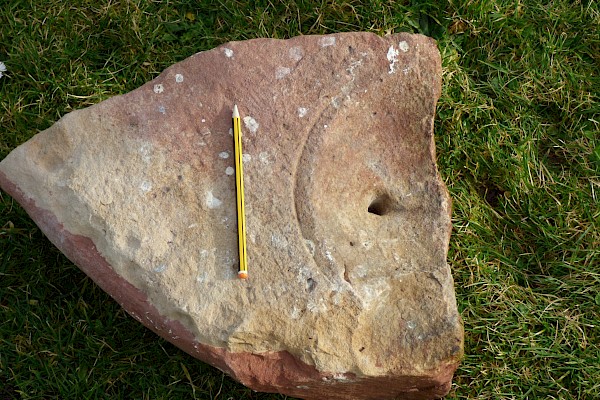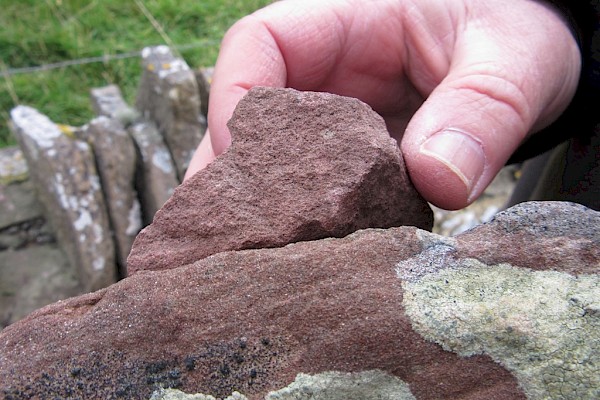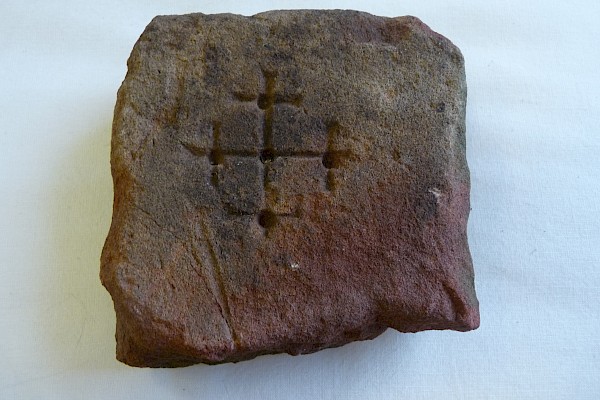Now for the scientific bit….
Things are moving forward with our joint project with local geologist Allen Fraser looking at the vibrant red sandstone built into the three kirks. In the quest to prove the stone originated from Orkney quarries, perhaps at the same time as St Magnus cathedral was being constructed in Kirkwall, we need to send samples for scientific analysis. First though we had a few hoops to jump through.
The kirks at Tingwall and Papil are situated within a churchyard wall and the areas within this boundary are safeguarded under Historic Environment Scotland’s (HES) scheduled monuments, protected under the Ancient Monuments and Archaeological Areas Act 1979 – click here for more information.
We did not want to remove stones from the buildings themselves but thankfully rubble stones were lying on the floors within these buildings which we could sample. Applications to HES were submitted and we kept our fingers crossed for six weeks until the exciting day the letters arrived to say we had permission - now we were ready to go!
Allen collected the samples and these were taken to the museum store in Lerwick where we already had the pieces of sandstone from St Mary’s Kirk in Ireland, Bigton within the museum’s archaeological collection. Local Bigton man, James Tait, also kindly let us sample a dressed stone thought to originate from the original kirk that would have stood near to his house on Steeple Green.
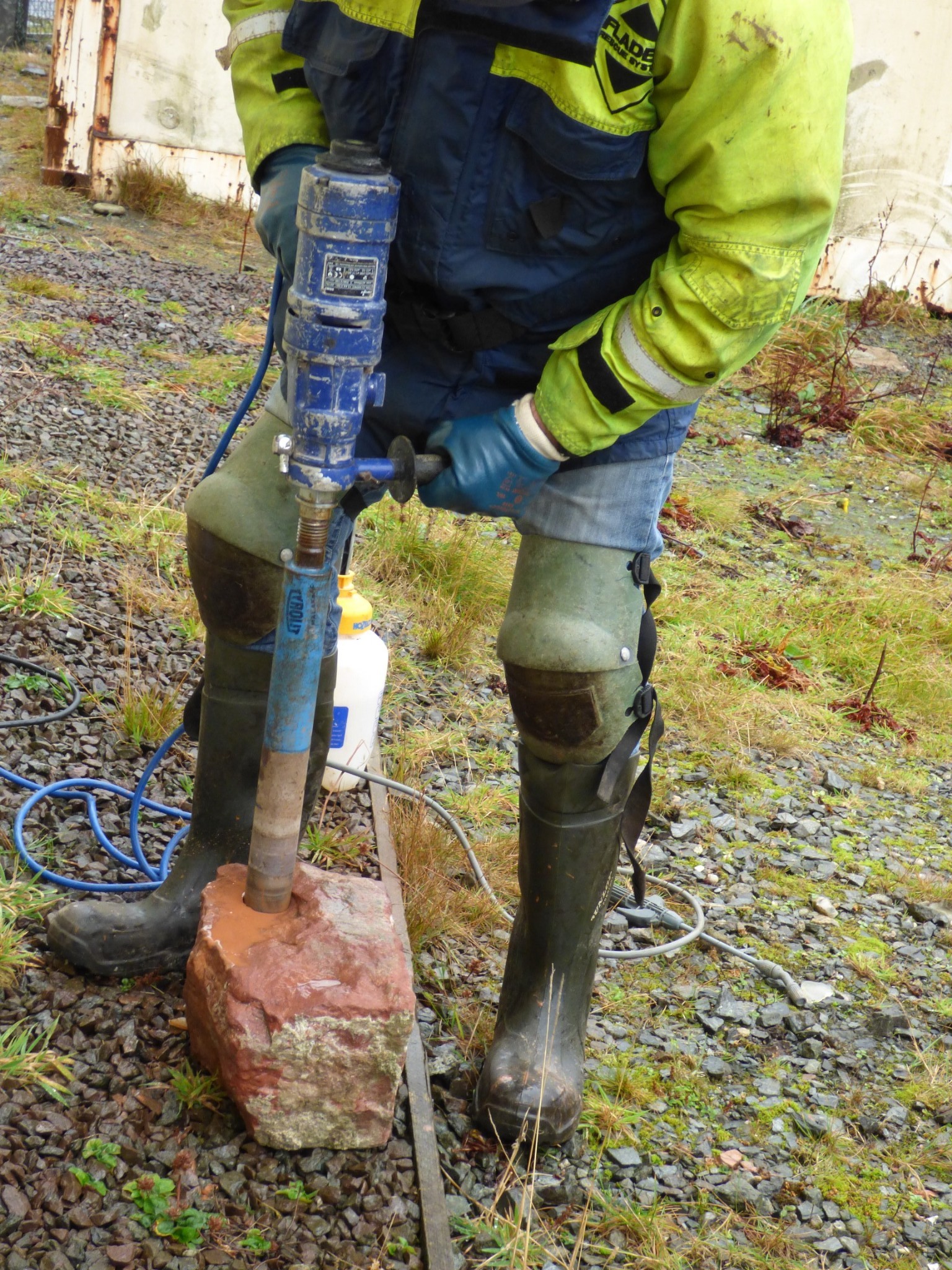
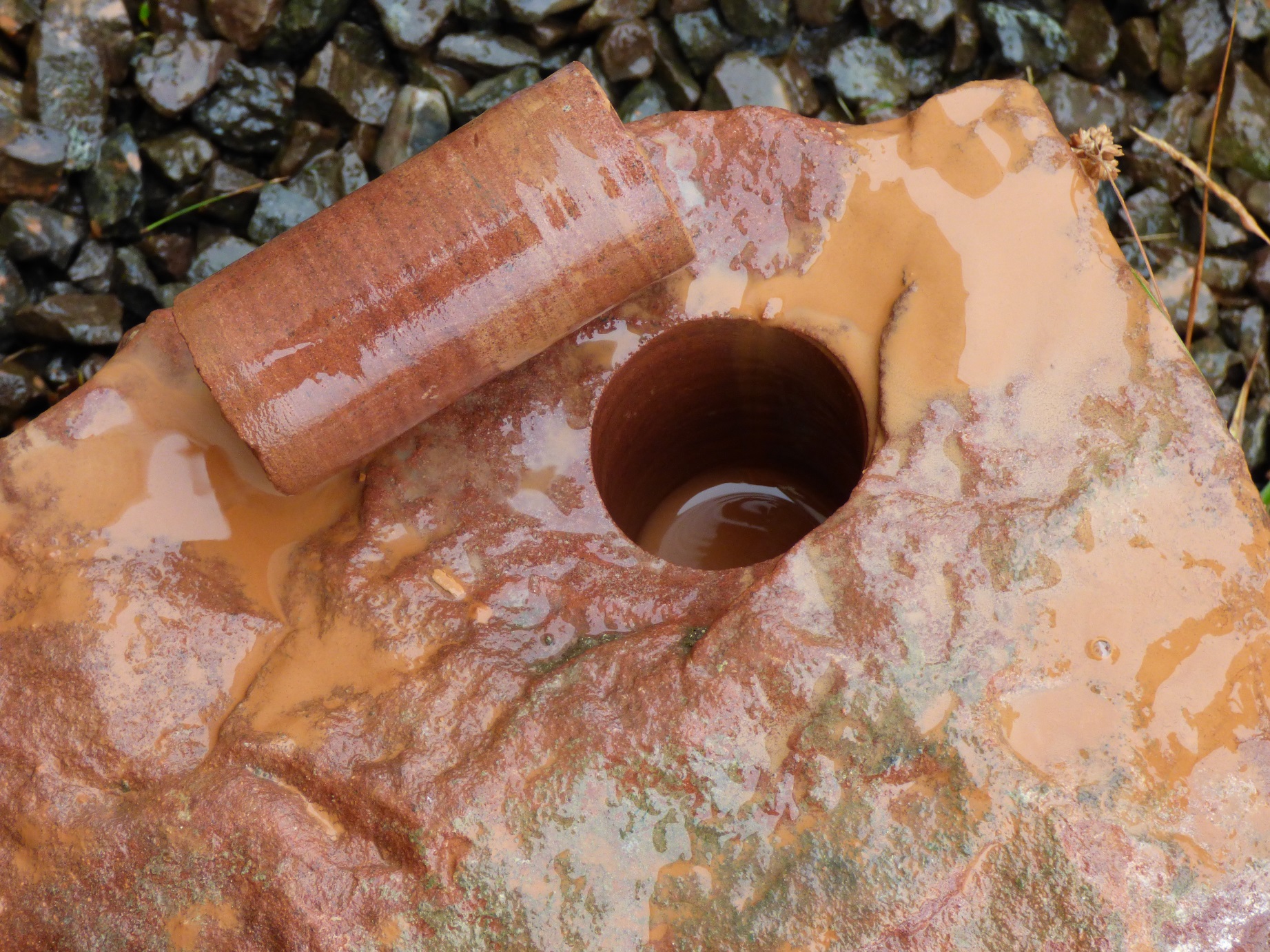
Now for the fun part! To collect the samples we had to get Tom Jamieson to visit with his stone corer to cut the sections required for laboratory analysis. Slices were removed to be sent away then the holes were then plugged using part of the sample taken and cemented back in place. We then put the stones back where they belonged.
To compare the Shetland examples with Orkney ones we took a short trip to Orkney to look at kirks there and of course the cathedral where Allen measured lots and lots of stone blocks in the rain! He also took time to visit quarry sites with Orcadian geologist John Brown, where he collected samples from the Holland Head quarry that was used as a source of building stone for St Magnus Cathedral.
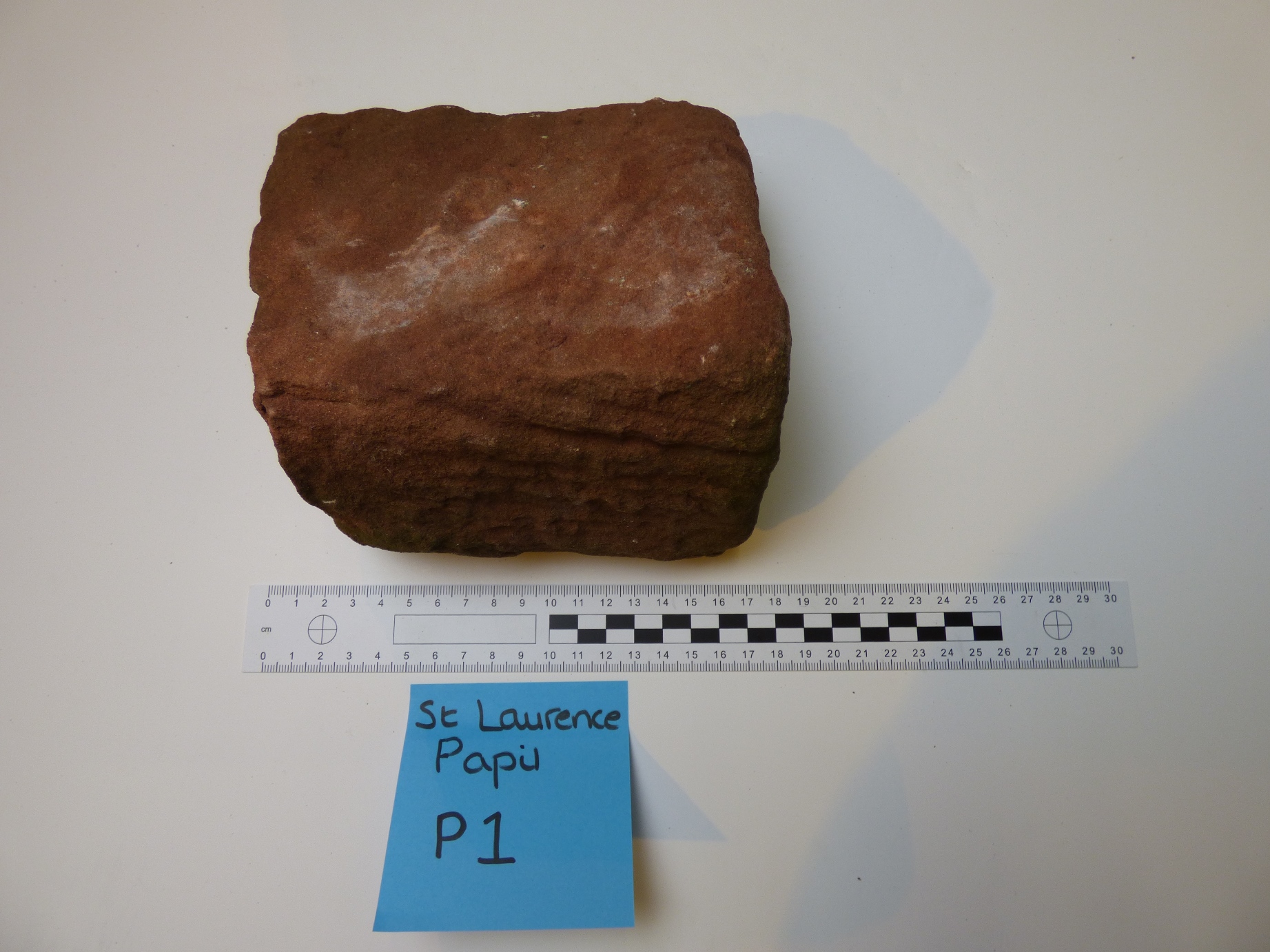
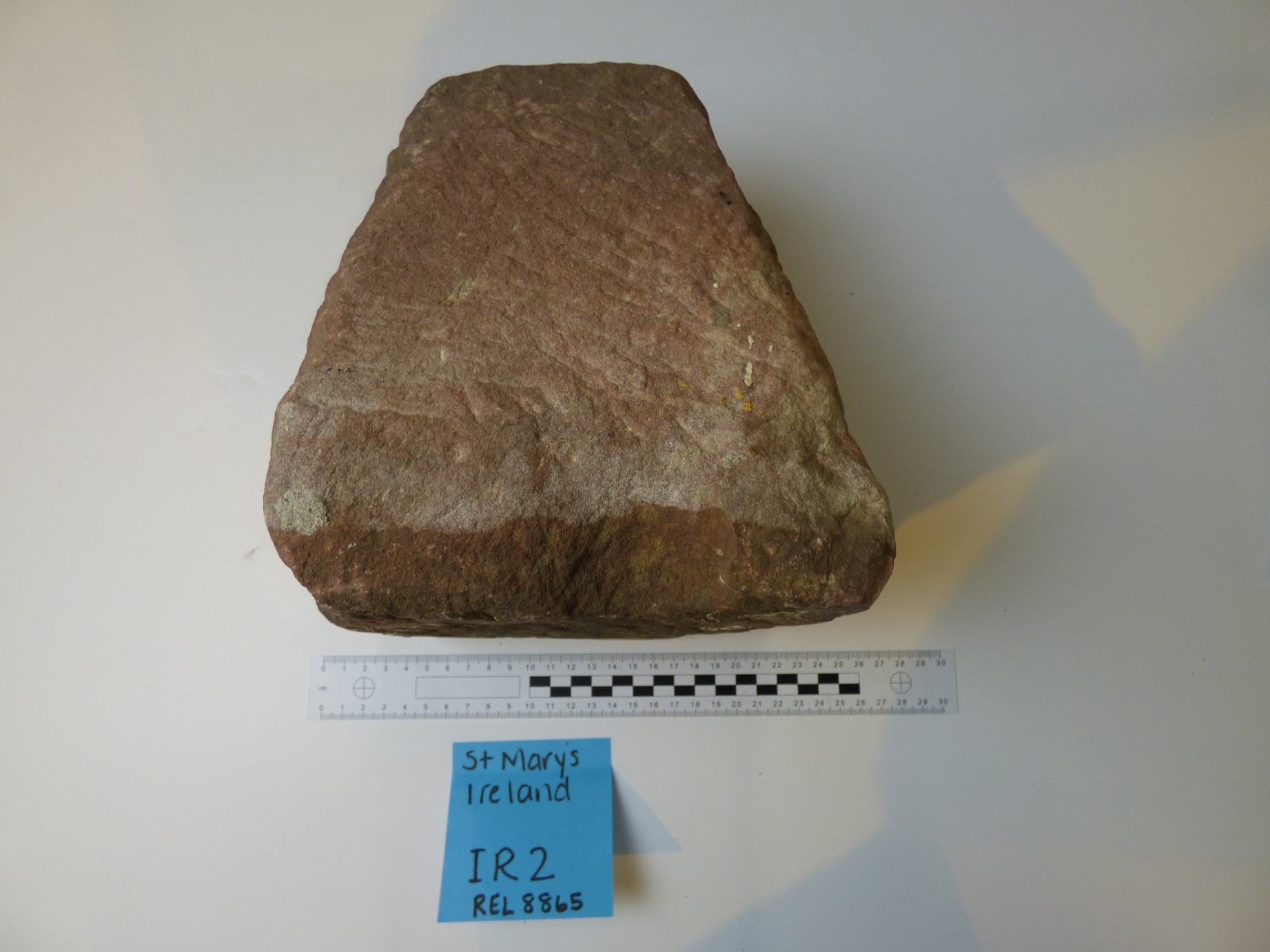
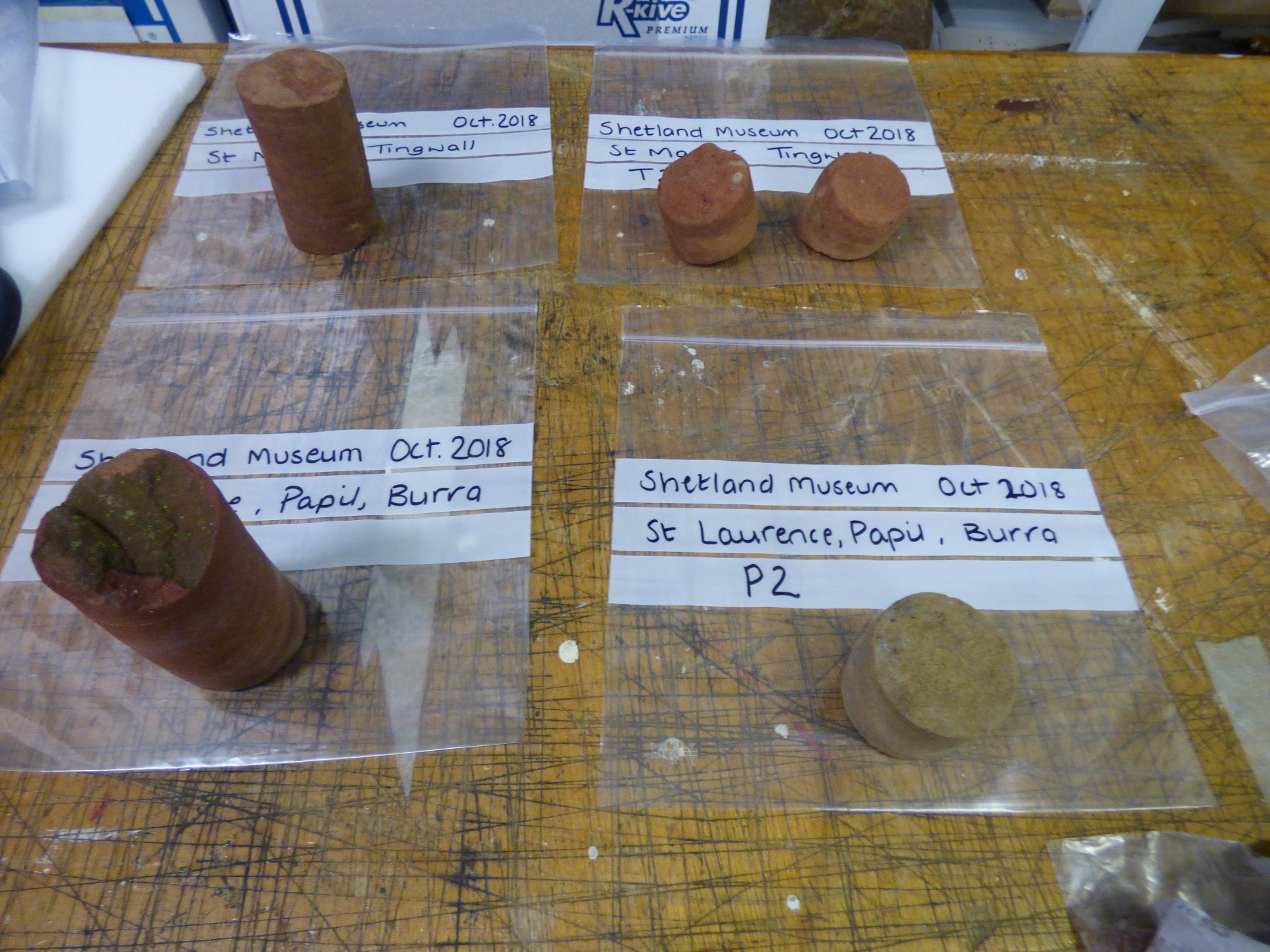
All our rock samples have now been sent to the British Geological Survey (BGS) for analysis. They do this by slicing up the samples with a diamond saw then grinding them optically thin for mounting on a microscope glass slide. The rock slides are then analysed using a polarising petrographic microscope for their mineral content, grain size, colour, porosity etc. This will allow scientists at the BGS to compare our samples with each other and with samples they already have on record from Orkney. The BGS will then compile a detailed report on our samples and their provenance and we should have this in January.
So roll on the New Year and the next step on our journey to solve the mystery of The Three Kirks!
